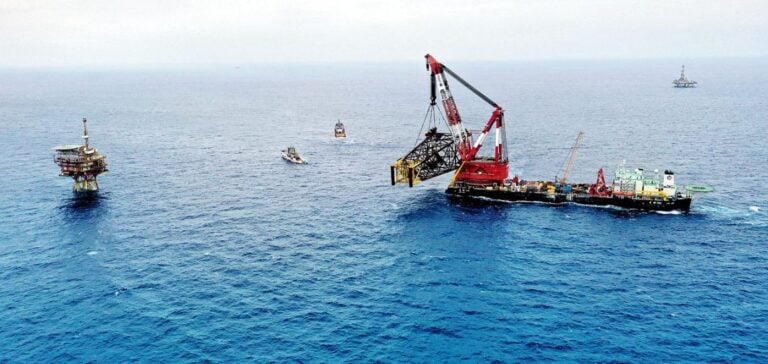China is strengthening its position in the energy market with the launch of a major project in the Panyu 11-12, 10-1, and 10-2 oilfields, located in the South China Sea. This development is part of a strategy to maximize oil production capabilities through innovative solutions and connected infrastructures.
With an average depth of 100 meters, this project targets a peak production of 13,600 barrels of oil equivalent per day by 2025. The extracted oil, primarily medium and heavy crude, serves as a strategic lever to meet domestic demand while optimizing operational costs.
Intelligent technologies at the core of the project
The project relies on two key installations: an unmanned platform and a platform connected by a trestle bridge to the existing infrastructure of the Panyu 10-2 field. These infrastructures, equipped with “Typhoon Production Mode,” ensure enhanced safety and better resilience against extreme weather conditions.
The integrated heavy oil processing system boosts operational efficiency while reducing environmental impact. This project also demonstrates a shift towards digitized and automated energy operations, aligned with strategic cost-reduction objectives.
Resource optimization and sharing
Resource sharing across the Panyu oilfields offers an advantageous economic model. By centralizing operations and sharing equipment, the project significantly reduces required investments. Since its initial commissioning in 2003, the Panyu field has produced over 380 million barrels of crude oil, a figure reinforced by this new technological adjustment.
This project also aligns with long-term goals for optimizing national energy resources, supporting China’s strategic ambitions in the global energy market.






















